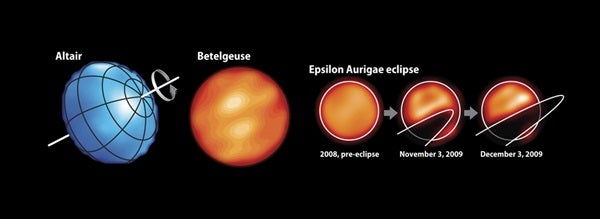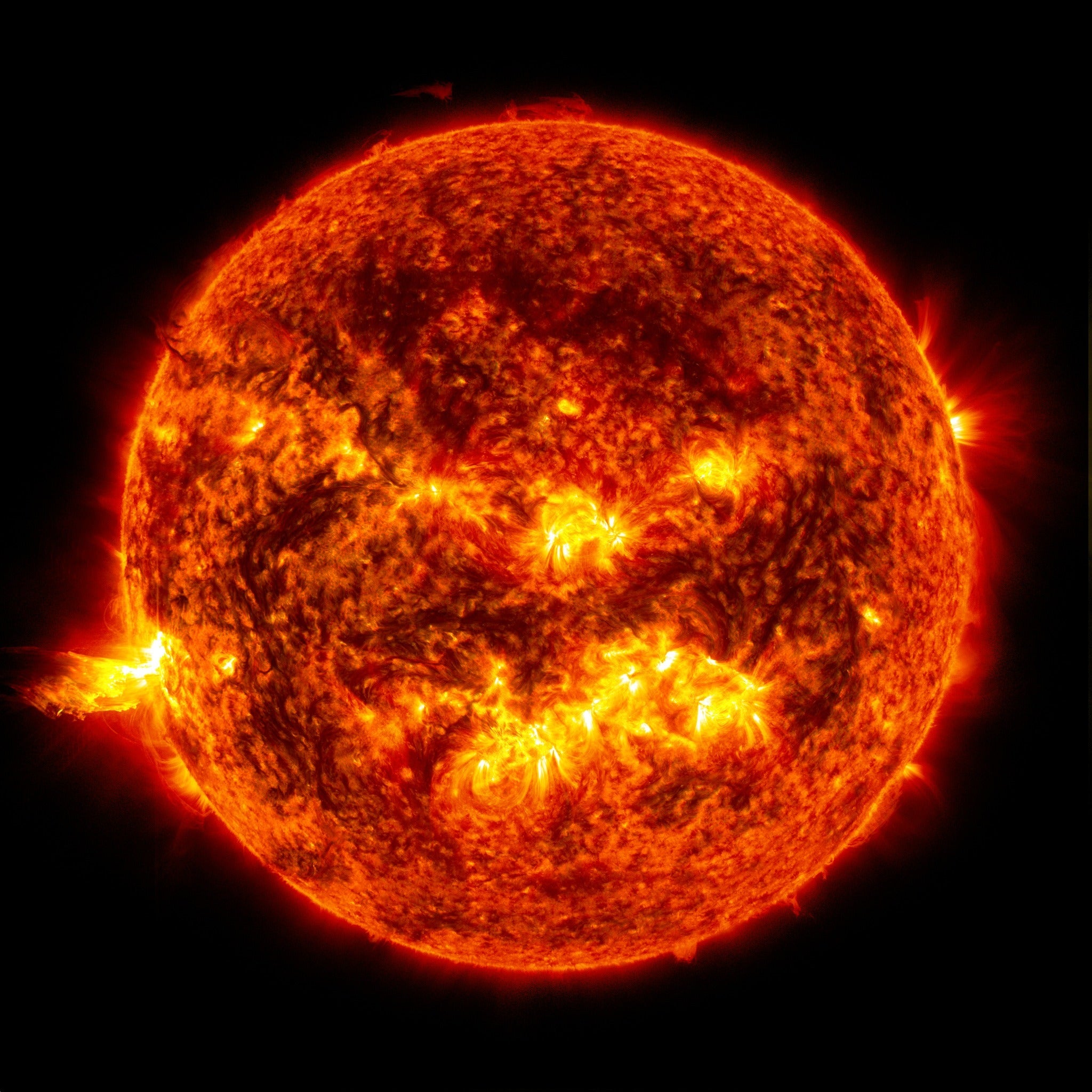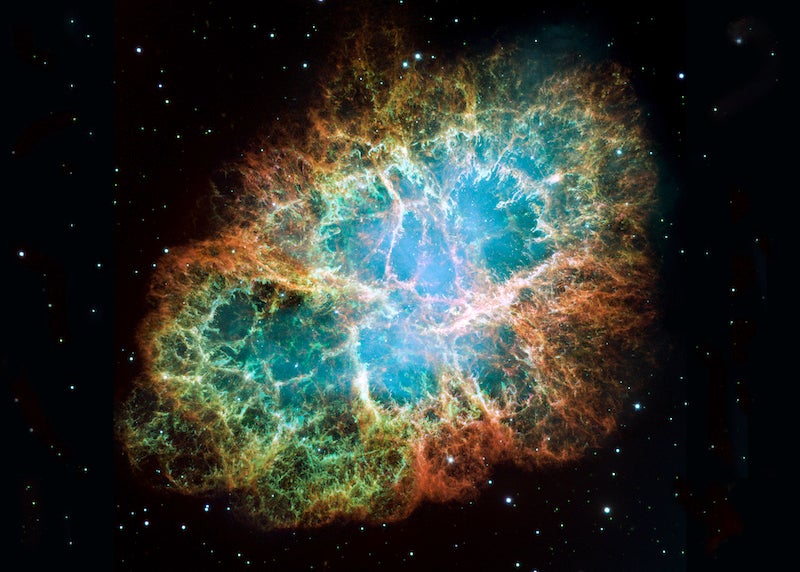You might recall Thomas Young’s famous double-slit experiment: Light coming from a source travels through two small openings (slits in the original experiment) and produces physical phenomena referred to as “interference fringes.” Today’s astronomical interferometers exploit this technique by using many separated telescopes to collect radiation and recombine the light. The combined light produces interference fringes, which scientists can mathematically invert to measure anything from the diameter of a star all the way to creating complex images. The angular scales we can study depend on the wavelength of light and how distant the telescopes are from one another.
In the past decade, astronomers routinely make images of stars to analyze stellar shapes (they are not all spheres), star spots, and evidence for mass flowing off the star itself (like dust and gas). Because of astronomers’ common love of great images, you can find many of these examples online. Some of the exciting ones include rapidly rotating stars like Regulus and Altair, and spots and mass loss from Betelgeuse and CW Leo. Astronomers have imaged disks around young stars like LkHa 101 and IRAS 13481–6124, and also binary systems like Wolf-Rayet 104, Epsilon Aurigae, and Beta Lyrae. Our typical “unit of measure” for these types of images is the milliarcsecond, or one one-thousandth of an arcsecond. (An arcsecond is one part in 3,600 of a degree.)
Interferometers in the Southern Hemisphere have examined Alpha Centauri, but as far as I am aware, no image of the system has yet been made. More than one dozen optical interferometers have been built across the world, although some have closed in recent years. — Michelle Creech-Eakman, New Mexico Institute of Mining and Technology, Socorro










